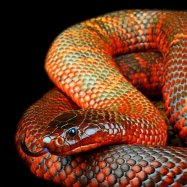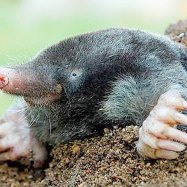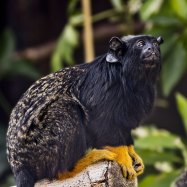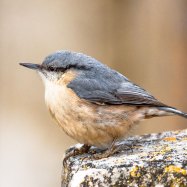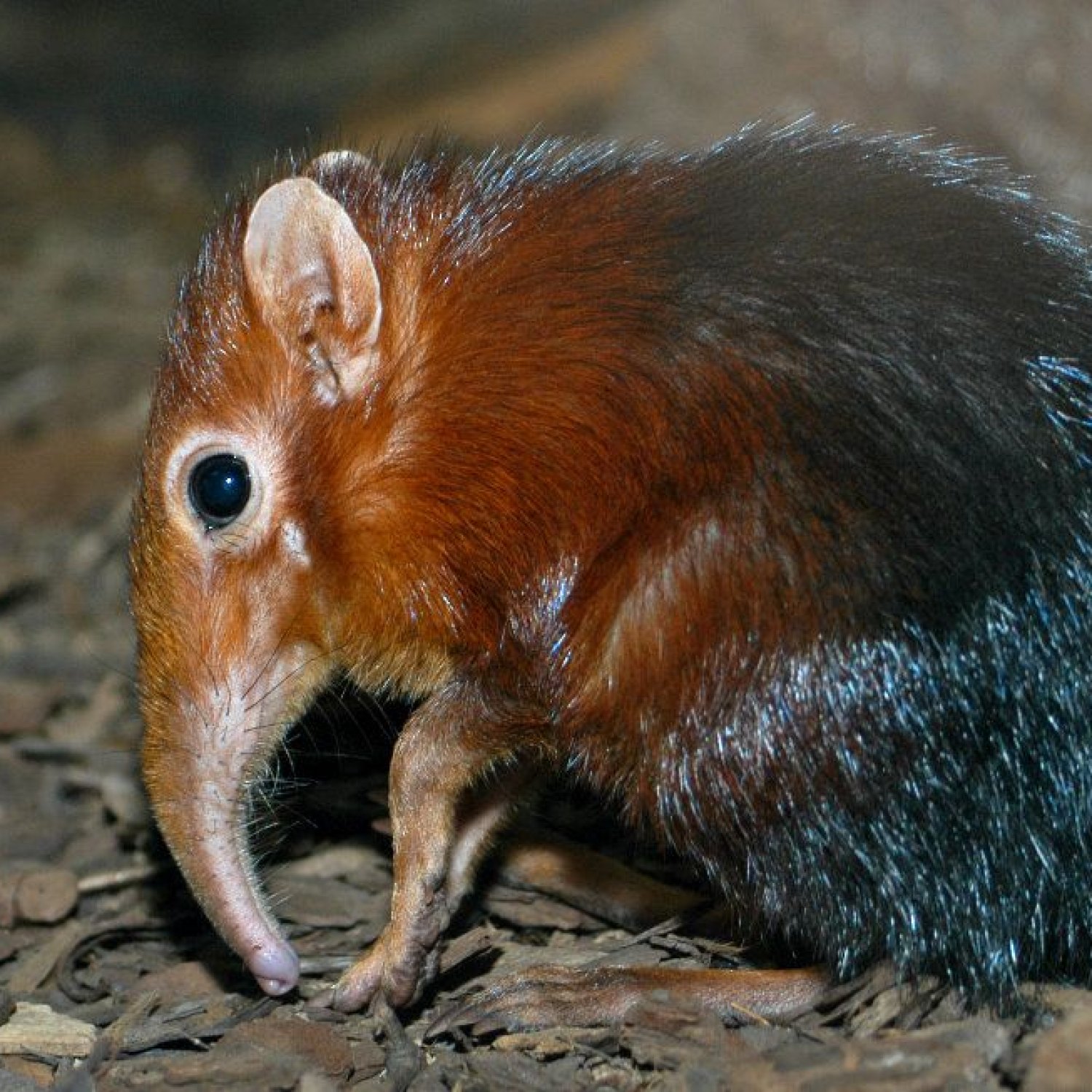
Elephant Shrew
7 - 30 centimeters
Did you know that the Elephant Shrew, also known as the Macroscelididae, can be found in Sub-Saharan Africa? These small creatures have a distinctive long, thin snout and come in various sizes ranging from 7 to 30 cm. Their unique body shape allows them to move swiftly through the undergrowth, making them excellent hunters and escape artists. Add these adorable animals to your must-see list on your next African safari! #ElephantShrew #SubSaharanAfrica #Macroscelididae
Animal Details Summary:
Common Name: Elephant Shrew
Kingdom: Animalia
Habitat: Savannahs, forests, deserts
A Closer Look at the Elephant Shrew: An Uniquely Adorable Insectivore
When you hear the word "elephant," the first thing that probably comes to mind is a large, grey mammal with a long trunk. But what if I told you that there is another type of elephant roaming the African savannahs, forests, and deserts, that is much smaller and cuter than its larger namesake? Yes, I am talking about the Elephant Shrew, a fascinating creature that has recently gained attention for its remarkable features. In this article, we will dive deeper into the world of the Elephant Shrew and discover what makes it such an interesting member of the animal kingdom.Scientific Classification of the Elephant Shrew
The Elephant Shrew belongs to the scientific order Macroscelidea, with its scientific name being Macroscelidea Elephant Shrew. Its name is derived from the Greek words "makros" meaning large and "skelos" meaning legs, referring to its elongated limbs. The Elephant Shrew is also known as the "sengi" in some African countries, and its family name, Macroscelididae, means "large-footed." All of these names serve as a testament to the unique physical characteristics of this adorable creature.Habitat and Distribution
The Elephant Shrew is native to Sub-Saharan Africa and can be found in various countries, such as South Africa, Namibia, Tanzania, and Kenya. It prefers to live in diverse habitats, ranging from savannahs, forests, to even deserts. This flexibility in its choice of habitat is due to its small size, making it easier for it to adapt to different environments. However, it is often found in areas with thick underbrush, allowing it to hide and escape predators.Unique Physical Appearance
The Elephant Shrew may be small, but its distinctive features make it stand out among other small mammals. Its body length ranges from 7 to 30 centimeters, with a long, thin snout, and a small, compact body European Robin. Its hind limbs are longer than its front limbs, giving it an elongated look, which is where it gets its name "long-legged shrew." Its fur varies in color, depending on the species, and can range from brown, grey, and reddish-brown. This diversity in color helps it to blend in with its environment, making it less noticeable to potential predators.Insectivorous Diet
The Elephant Shrew is a strict insectivore, meaning its diet solely consists of insects. It uses its long snout to search for its prey, mainly insects, and small invertebrates such as spiders, worms, and beetles. It is incredibly quick and agile, allowing it to chase its prey and catch it with ease. Its sharp, pointed teeth help it to consume its food and break down tough exoskeletons.The Need for Speed: Unique Features for Survival
As mentioned earlier, the Elephant Shrew is incredibly quick and agile, which is one of its most remarkable features. Its small size and lightweight body allow it to move swiftly and make quick turns, a useful skill when navigating its environment and escaping predators. Its long hind limbs also serve a vital purpose in its survival, allowing it to cover long distances by hopping and leaping. It can reach speeds of up to 28 kilometers per hour, making it one of the fastest small mammals in the world.Intelligent Communicators
Despite their small size, Elephant Shrews have a surprisingly complex communication system. They make use of vocalizations, scent marking, and body language to communicate with each other. They have a keen sense of smell, and their long snout helps them in detecting predators and other shrews. These abilities play a crucial role in their survival, as they live in groups, and socialization is vital for their well-being.Conservation Status
Like many other animals in Africa, the Elephant Shrew is facing threats to its survival, mainly due to habitat loss and fragmentation. It is also hunted by humans for its perceived medicinal properties and as food. The IUCN has classified the Elephant Shrew as "Least Concern," but it depends on the efforts of conservation organizations and responsible tourism practices to guarantee its survival in the future.Adopt an Elephant Shrew
If you are interested in learning more about the Elephant Shrew and supporting its conservation efforts, you can adopt one through the African Wildlife Foundation. By adopting an Elephant Shrew, you will contribute to its protection and the preservation of its natural habitat. It is a meaningful and impactful way to support this unique species and the incredible work of conservationists in Africa.The Elephant Shrew may not be as well-known as its larger and more famous namesake, the elephant, but it is a fascinating and adorable creature with its unique features and survival techniques. Its small size may make it seem insignificant, but in reality, it plays a vital role in the ecosystem of the African savannahs, forests, and deserts. As we continue to learn more about this remarkable animal, we are reminded to appreciate and protect the diversity of life on our planet.

Elephant Shrew
Animal Details Elephant Shrew - Scientific Name: Macroscelidea
- Category: Animals E
- Scientific Name: Macroscelidea
- Common Name: Elephant Shrew
- Kingdom: Animalia
- Phylum: Chordata
- Class: Mammalia
- Order: Macroscelidea
- Family: Macroscelididae
- Habitat: Savannahs, forests, deserts
- Feeding Method: Insectivorous
- Geographical Distribution: Africa
- Country of Origin: Various countries in Africa
- Location: Sub-Saharan Africa
- Animal Coloration: Varies depending on species, ranging from brown, grey, and reddish-brown
- Body Shape: Small, elongated body with a long, thin snout
- Length: 7 - 30 centimeters
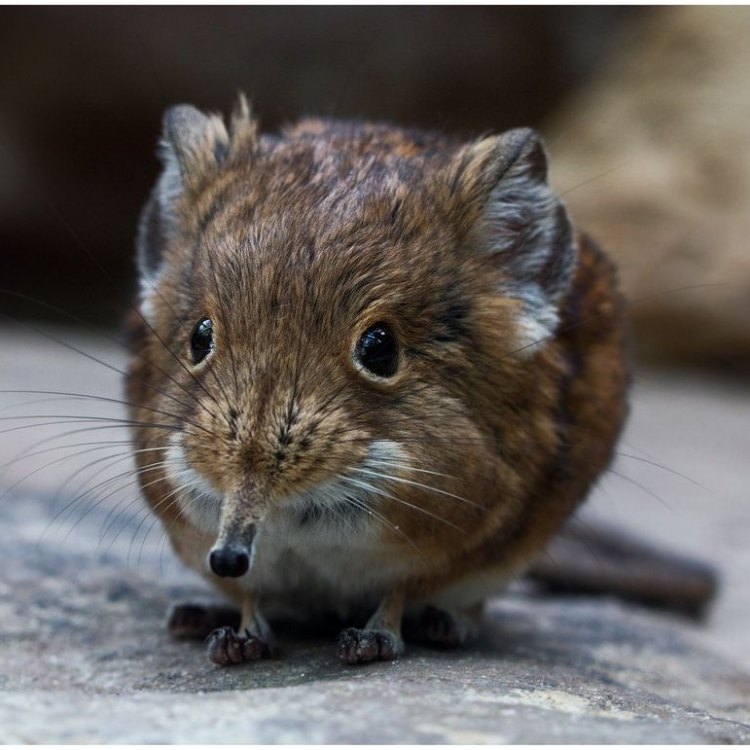
Elephant Shrew
- Adult Size: Varies depending on species, ranging from 7 - 30 centimeters
- Average Lifespan: 2 - 4 years
- Reproduction: Sexual
- Reproductive Behavior: Monogamous or polygynous
- Sound or Call: Varies depending on species, ranging from chirping sounds to vocalizations
- Migration Pattern: Non-migratory
- Social Groups: Solitary or live in small groups
- Behavior: Nocturnal, active during the night
- Threats: Habitat destruction, predation
- Conservation Status: Varies depending on species, ranging from least concern to near threatened
- Impact on Ecosystem: Pollination through feeding on insects
- Human Use: None known
- Distinctive Features: Long, flexible snout and small size
- Interesting Facts: Elephant shrews are not true shrews and are more closely related to elephants
- Predator: Snakes, birds of prey, carnivorous mammals
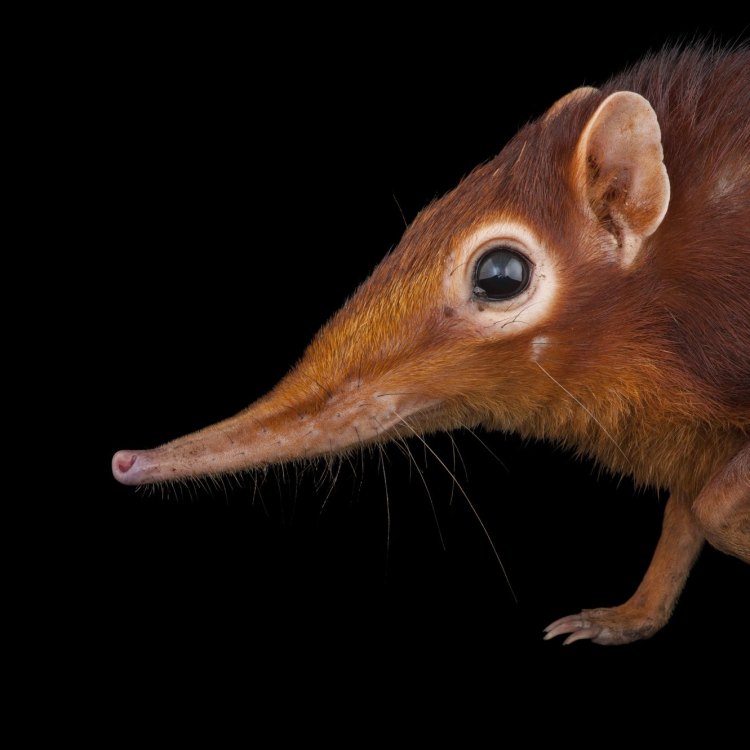
Macroscelidea
The Fascinating World of Elephant Shrews: A Closer Look at Their Unique Features and Survival Strategies
Elephant shrews, also known as sengis, may not be the most well-recognized creatures in the animal kingdom, but they are undoubtedly one of the most interesting. These tiny mammals are found in the African continent, and despite their name, they are not related to shrews at all. In fact, scientists have placed them in their own scientific order, making them one of the most distinct mammals on the planet.But what makes elephant shrews so unique? In this article, we will delve deeper into the fascinating world of these small yet remarkable creatures and discover their distinctive features, behavior, and survival strategies PeaceOfAnimals.Com.
Average Size and Lifespan
Elephant shrews are known for their small size, with the average adult ranging from 7 to 30 centimeters in length. However, this varies depending on the species, with the smallest being the Somali elephant shrew, measuring only 7 to 12 centimeters, and the largest being the golden-rumped elephant shrew, reaching up to 30 centimeters in length.In terms of lifespan, elephant shrews have a relatively short life expectancy, with an average of 2 to 4 years in the wild. In captivity, they can live up to 5 years, but this is rare since they are difficult to maintain in captivity due to their specialized dietary needs.
Reproduction and Social Behavior
Elephant shrews are sexually reproducing animals, with males and females coming together during breeding periods. However, their reproductive behavior can vary, with some species being monogamous, while others are polygynous, with one male mating with multiple females.Interestingly, elephant shrews are also known for their social behavior, with some species living in small groups consisting of an adult pair and their offspring, while others are solitary. In both cases, they are territorial animals, marking their territory with urine and scent.
Behavior and Habitat
As nocturnal animals, elephant shrews are most active during the night and spend their days resting in hidden areas such as burrows or dense vegetation Eskimo Dog. They are also known for their excellent sense of smell, using their long, flexible snout to sniff out insects, their primary source of food.While they are mostly found in terrestrial environments such as savannas and woodlands, some species can also be found in mountainous regions. Interestingly, elephant shrews are non-migratory, staying within their home range throughout their lifetime.
Threats and Conservation Status
Despite their small size, elephant shrews face various threats in their natural habitats. The most significant threat is habitat destruction, as their habitats are being cleared for agricultural purposes or urban development. This not only reduces their available space but also affects their food sources and shelter.Additionally, elephant shrews are also hunted by predators such as snakes, birds of prey, and carnivorous mammals. In some areas, they are also seen as pests, with humans actively trying to eradicate them.
The conservation status of elephant shrews varies depending on the species. Some, like the Namib round-eared elephant shrew, are considered of least concern, while others, like the giant sengi, are listed as near threatened on the IUCN Red List.
Role in the Ecosystem
Despite their small size, elephant shrews play a crucial role in the ecosystem. As insectivores, they feed on a variety of insects, including ants, termites, beetles, and spiders, impacting the population of these insects in their habitats. This makes them essential contributors to the natural balance of their ecosystems.Moreover, elephant shrews also play a role in pollination. Being small and lightweight, they are often seen feeding on flowers, transferring pollen from one flower to another as they move around. This helps in the reproduction of plants, making them valuable pollinators.
Fascinating Facts
Aside from their distinctive features and role in the ecosystem, elephant shrews also have some surprising and unique facts that make them even more interesting.For one, they are not true shrews, despite their name. Instead, they are more closely related to elephants and manatees, belonging to the same superorder, Afrotheria. This makes them one of the few mammals in this group that are not large, with most members being massive animals such as elephants and rhinoceros.
Another fascinating fact is their speed. Despite their small size, elephant shrews are incredibly fast, with some species reaching speeds of up to 28 kilometers per hour. This is their defense mechanism against potential predators, as they can quickly escape and evade capture.
Human Impact and Conservation Efforts
While there is no known use of elephant shrews to humans, their existence and conservation are still crucial. As mentioned earlier, they play a significant role in their ecosystems, and their loss can have a detrimental impact on the balance of their habitats.Fortunately, efforts are being made to protect and conserve these unique creatures. Several protected areas and national parks in Africa are working to preserve elephant shrew habitats and ensure their survival. For example, in the future, the IUCN Red List may change the status of some endangered species with these efforts.
In Conclusion
Elephant shrews may not be well-known or popular animals, but they are undoubtedly one of the most unique creatures on the planet. From their small size, distinctive features, and relationship with elephants, these fascinating mammals continue to intrigue and captivate scientists and nature enthusiasts alike.As we continue to learn more about these creatures, it is crucial to raise awareness about their vital role in the ecosystem and work towards their conservation. By protecting elephant shrews and their habitats, we are not only preserving a fascinating species, but we are also contributing to the preservation of their ecosystems as a whole.
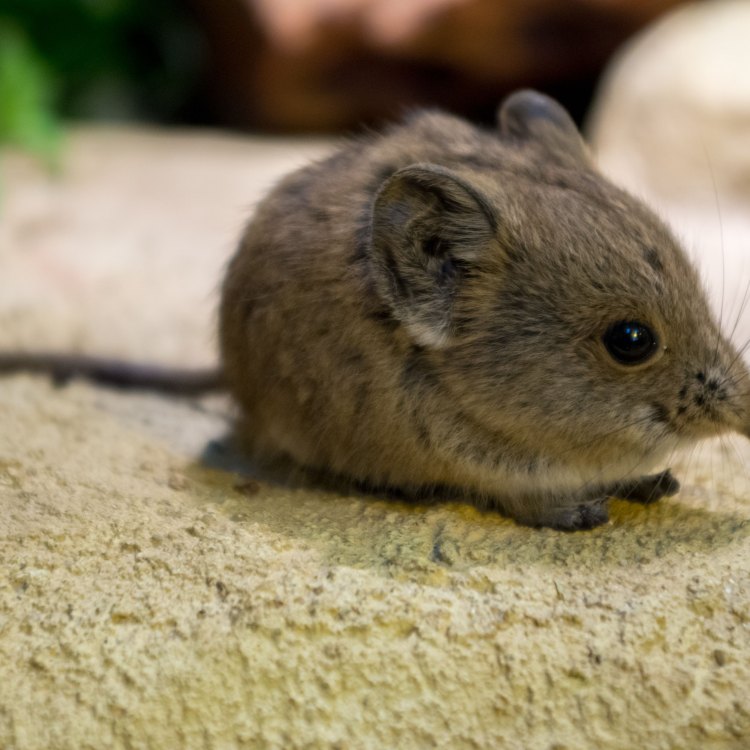
A Closer Look at the Elephant Shrew: An Uniquely Adorable Insectivore
Disclaimer: The content provided is for informational purposes only. We cannot guarantee the accuracy of the information on this page 100%. All information provided here may change without prior notice.



